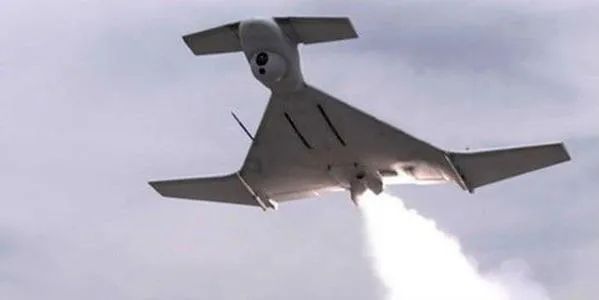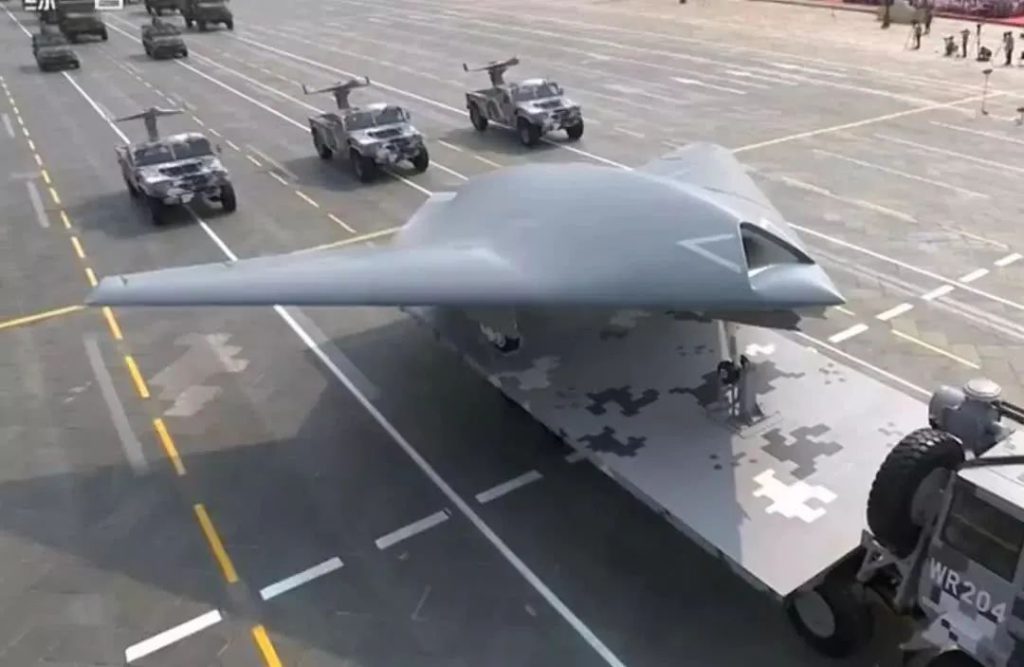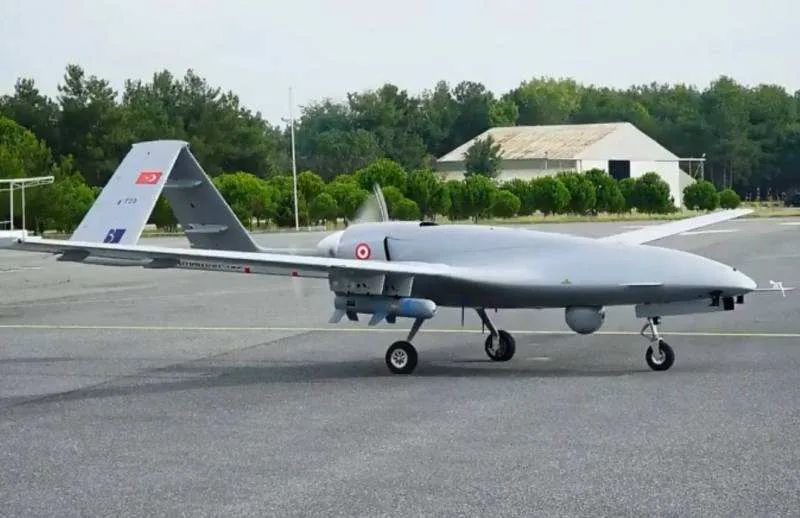The “Diplomat” website recently published an article by Eric Chen, an expert on Chinese political and security affairs, and conducted a large-scale analysis of the experience and lessons the Taiwan military can learn from the karabakh conflict.
The article believes that Taiwan can gain valuable experience from the role of drones, drone decoys, and maintaining flexible tactical thinking in military conflicts. The original text ignores the huge gap in military strength between the two sides of the Taiwan Strait and the obvious differences in military intentions, and provokes Taiwan’s military to resist reunification by force. However, the views raised by it can also be understood and guarded against. Part of it is now excerpted for reference and criticism.
According to the article, a Taiwanese army major claimed that the increase in drone reconnaissance and strike range means that everything that exists is its target. How can we defend?
The article quoted the author’s colleague and replied: “This is a good question, but the Taiwan military may encounter a situation where the opponent can already aim easily without using a drone. Secondly, the drone is an asymmetric weapon. At this time, the opponent must worry more about how to defend against Taiwan’s drones.”
The article believes that the recently announced ceasefire in the karabakh conflict has strongly proved the important role of drones. By analyzing various post-conflict action reports, the author summarized three aspects worthy of “learning” from the Taiwan military.
Use drone tactics flexibly.
In military operations, air and sea suppression is critical. Taiwan’s comprehensive defense concept emphasizes “decisive battles in coastal areas and destroying the enemy on landing beaches”, while the PLA emphasizes the use of large-scale joint firepower to destroy Taiwan’s air forces and completely paralyze its defense capabilities.
However, the first thing worth learning about the karabakh conflict is that through the use of large-scale unmanned aircraft systems, ground forces may deploy a large number of UAV systems in local wars, allowing its air force to show more powerful power.

According to the article, in the karabakh conflict, Azerbaijan used patrol missiles (suicide drones), medium-sized attack drones with guided munitions, and artillery reconnaissance drones to deal devastating blows to its opponents.
Although the opponent strengthened the fortifications, the drones destroyed many fixed command posts, logistics centers and assembly areas during the war, severely weakening Armenia’s defense capabilities.
In the open area, about 240 tanks were destroyed or captured on the way forward. Destroying Armenian armored mechanized units is crucial for the Azerbaijani light special operations forces to occupy Shusha defensive points with the support of artillery, thus speeding up the process of ending the war.
The article claims that considering the strong air superiority of the PLA Air Force, a small radar stealth drone (UAS) may mean that when the PLA is extremely exhausted, Taiwan’s military is capable of launching an offensive while maintaining its role in combat defense.
The author confidently believes that this will become a huge resource trap for the People’s Liberation Army. If the US Air Force and Navy destroy the People’s Liberation Army’s supply capabilities, it will be isolated and helpless.
Taiwan military can expand the formation of air decoy aircraft.
According to the article, one of the greatest advantages of the PLA compared with the Taiwan military is its ability to conduct missile-saturated precision strikes.
In the past ten years, the extensive service of precision-guided ground-attack cruise missiles and short-range ballistic missiles has made the Rocket Force of the People’s Liberation Army “the largest and most diverse missile force in the world.” It is now more than ever. Well integrated into the PLA’s theater operations.
The author believes that this is another place that Taiwan should learn from the karabakh conflict. Azerbaijan uses a large number of An-2 drones as decoy aircraft to locate Armenian air defense and artillery positions.
The technical content of these decoys is very low. The aircraft operators just control the cheap An-2 drones to fly towards the Armenian defense line, tie the control device with a belt to maintain the course, and then release them.
Used in conjunction with armed drones, this proved to be a very cost-effective method to expose and lock down the opponent’s air defense system.
The article claims that the Taiwan military can also expand a fleet of cheap decoy aircraft on a large scale. Its main task is to act as a target decoy and consume the PLA’s air defense missiles.
The formation may be a mixture of drones, biplanes, or even aging fighters. Currently, Taiwan is phasing out existing F-5 fighters, and these fighters may be reused as decoy aircraft.
Taiwan’s expansion of unmanned decoy aircraft formations can not only deceive the PLA, but also attack targets in the mainland, forcing the PLA to increase its expenditure on strengthening and strengthening bases and missile/UAV defense.

Once again, use tactical flexibility to win by surprise.
The article stated that the predictability problem is not limited to military operations. Since the United States is Taiwan’s main weapons supplier, the Taiwan military has also absorbed many of the habits of the US military—not only the American way of fighting, but also the service culture and procurement policies, which encourage them to purchase high-end weapons.
Although there are many articles suggesting that Taiwan’s procurement of military equipment should shift from high-end weapons to asymmetrical weapons, people have relatively little thought about the flexible use of tactics.
The article points out that the same thinking is fatal to the Armenian army. Although Armenia did some homework before the outbreak of the war, that is, it believed that static “trench defense” could fight the Azerbaijanis, but the slow rate of personnel replacement led to the emergence of a large number of volunteers in the Armenian army.
These volunteers had participated. Veterans of the 1994 Ya-Afghanistan war used old-fashioned weapons for trench defense. Because the modern warfare in 2020 is completely different from the Soviet firepower attrition method used in Armenia’s victory in 1994, the morale of the soldiers is very low, the Armenians are trapped in the trenches, and then destroyed.
The article stated that as far as Taiwan is concerned, this lesson requires the Taiwan military to be able to flexibly use the various combat methods of the US military.
The US military’s model is based on expeditions, centered on air power, has mobility, and has huge personnel and logistical support. In addition, not being obsessed with one mode of operation means having greater tactical flexibility and being able to learn lessons from multiple modes of warfare. For example, Finland, Sweden, and Singapore, both in terms of equipment and threats, have some similarities with Taiwan’s defense situation.
In fact, these suggestions given by foreign media are not very feasible in terms of financial resources, scientific and technological capabilities, and personnel fighting intentions.
If you want to fight drones, the mainland’s technology and production capacity will crush Taiwan; if it is to fight tactics In terms of literacy, judging from the Han Kwong military exercises in which the Taiwan military has been involved every year, there are not many bright spots.



